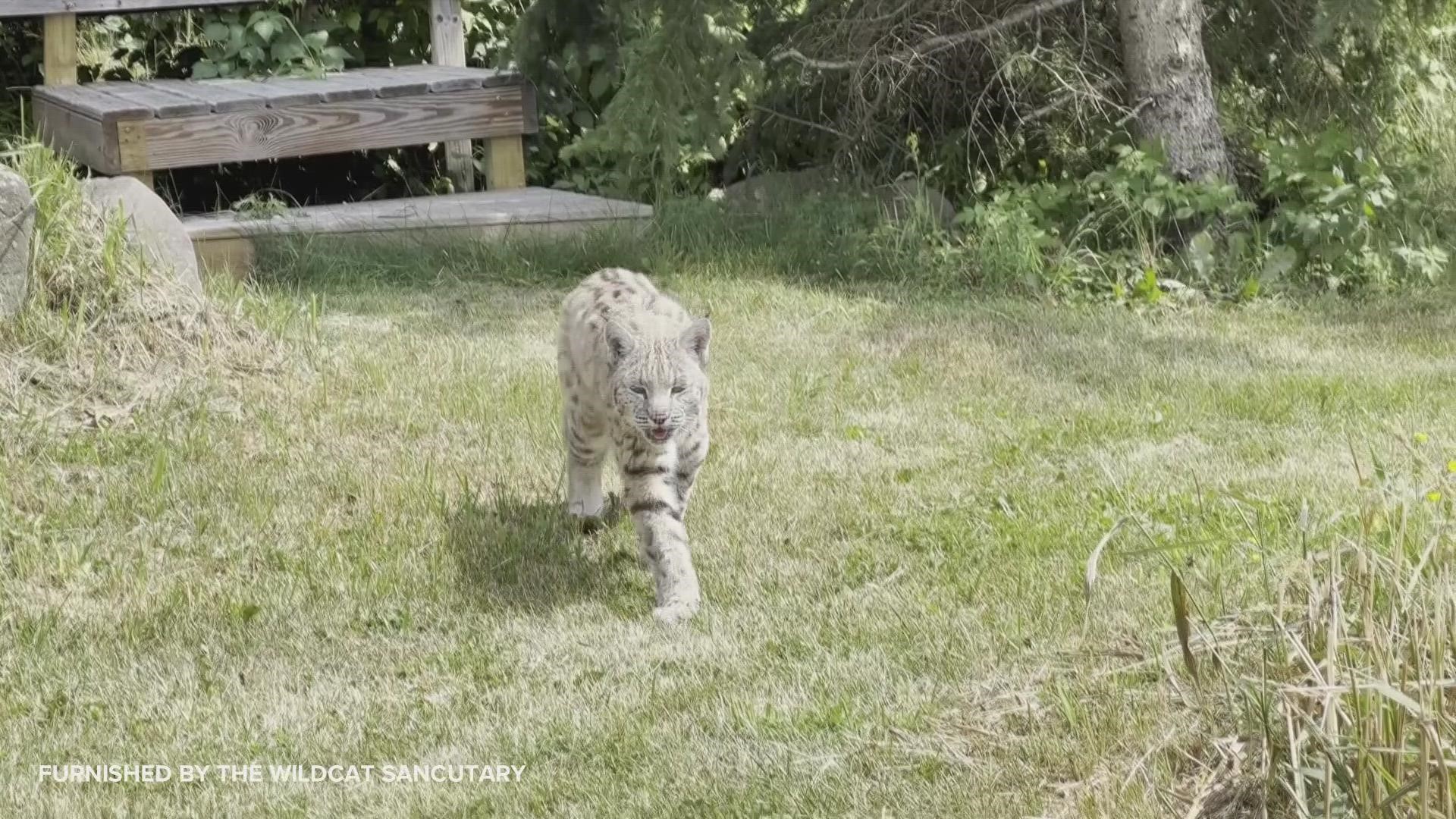SANDSTONE, Minn. — His official name is Baby Jenga Blue, but a 19-year-old bobcat who calls the Wildcat Sanctuary in east central Minnesota home, is far closer to a senior citizen in terms of health.
While veterinary staff at the sanctuary can't turn back the clock, they do lean on developing medical technology to help keep their cats comfortable and active. In Baby's case, that recently involved performing a stem cell treatment to ease symptoms of his chronic arthritis.
The actual procedure was performed by Wildcat Sanctuary vet Dr. Joanne Kamper, but it involved a colleague at Michigan State University. There, Dr. Valarie Johnson grew the stem cells in her lab using fatty tissue from a healthy bobcat at the sanctuary, harvested during a routine wellness exam.
Once the cells were ready for transplant they were shipped back to Sandstone, where Dr. Kamper injected them into Baby's troublesome wrist and through a general IV infusion for distribution throughout his bloodstream to ease inflammation in all of the bobcat's joints.
“This collaboration (with Michigan State University) is so important to provide the best possible care for older residents and has the potential to help many more bobcats and other wild cats in the future.” said Wildcat Sanctuary Executive Director Tammy Thies in a statement. "This procedure can’t turn back time, but it can make animals much more comfortable and active in their elder years. Baby Jenga is proof of that."
Wildcat Sanctuary officials say stem cell therapy has triggered dramatic clinical improvement in cases of arthritis affecting horses, giraffes, coyotes, cougars and many more species. It generally takes six weeks or longer to know the full impact of the treatment, but vet staff is optimistic the stem cell procedure will provide "crucial relief" for Baby.
It is believed the senior bobcat is the first of his species to receive stem cell therapy. In most cases, arthritis is currently managed by using non-steroidal anti-inflammatories, laser therapy and pain medication.

